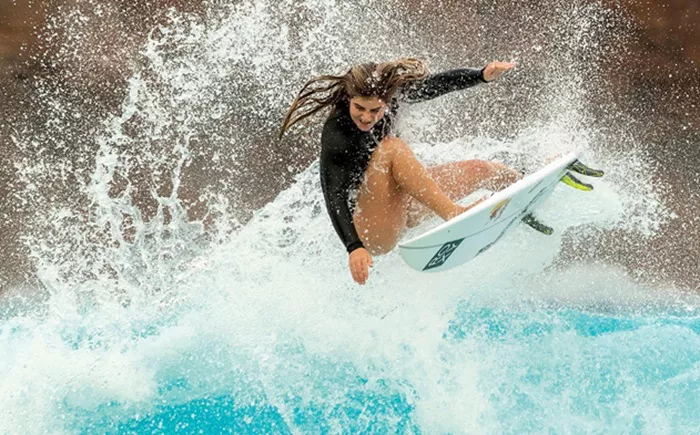A recent study conducted by the University of Sydney has shed light on the significant barriers hindering Australian women surfers, both in their professional careers and in their participation at the grassroots level. The research, titled Waves of Change, emphasizes the persistent inequalities that women face when pursuing competitive and recreational surfing in Australia.
Despite high-profile victories such as Isabella Nichols and Jack Robinson’s wins at the Rip Curl Pro, where both surfers claimed $80,000 each in prize money—thanks to the World Surf League’s (WSL) equal prize money policy—many women are still struggling with systemic obstacles that impede their progress in the sport.
Dr. Ece Kaye and Dr. Leila Khanjaninejad, who led the study, found that while the WSL’s equal pay policy was a significant milestone, other barriers persist. These include a lack of competitive opportunities for women, fewer spots in professional competitions, and a noticeable disparity in commercial opportunities. The research suggests that male surfers continue to benefit disproportionately from sponsorships and marketing, hindering women’s visibility and advancement.
Despite some positive changes, such as the planned expansion of the Women’s Championship Tour (CT) field from 18 to 24 surfers in 2026, the gap between the men’s and women’s competitions remains substantial. The men’s field will still have 36 participants, making the disparity clear.
Sally Fitzgibbons, a prominent Australian surfer, emphasized the need for greater balance in event scheduling. “Ideally, you can just have that even spread of days that you’re watching men and women,” Fitzgibbons said. “Instead of maybe one day of women and three days of men’s surfing. It just sort of evens out the ledger a little bit, and it looks like less of a side piece.”
The study also highlighted the unique challenges women face off the competition circuit. Many women professional surfers are balancing their athletic careers with education and work commitments—an issue not as commonly faced by their male counterparts. Bella Nichols, for example, is pursuing an engineering degree while contending for a world title, illustrating the pressure women face to juggle multiple responsibilities.
In addition to the professional challenges, the study found that women surfers face cultural and systemic barriers that prevent them from fully participating in the sport. These include aggressive behavior in surf lineups, intimidation in the water, and even safety concerns in parking lots. A 2002 AusPlay survey indicated that while an estimated 196,000 Australians aged 15 and older took up surfing since 2019, women still represent only 28% of the Australian surfing population, a gap that is mirrored in many other surfing nations.
However, the study does not present these challenges without suggesting solutions. Dr. Khanjaninejad pointed to several key strategies for fostering inclusivity and boosting female participation, such as implementing surf spot codes of conduct to address intimidation, expanding mentorship programs for women surfers, and incorporating female-focused teaching methods in surf lessons.
“We hope our research empowers everyday beachgoers and casual surfers to recognize their role in creating welcoming environments,” Dr. Khanjaninejad explained. “Challenging intimidating behavior and highlighting how seemingly minor actions in the lineup can have major impacts on participation is key.”
The report also addressed the lack of female representation in leadership positions within the surfing industry. Women are underrepresented in roles such as judging, coaching, and administration, limiting their ability to influence decision-making within the sport. At the recent Bells Beach event, for example, there was only one female coach and a single woman in the judges’ booth.
The study recommends creating more pathways for women to enter leadership roles across surfing organizations, competition judging, coaching, and industry administration. It also stresses the need for dedicated funding for women’s development programs across Australia, with government support being crucial to establishing the necessary infrastructure and pathways.
While the WSL’s equal pay policy represents a significant step forward, the researchers argue that a more comprehensive approach is necessary to achieve true gender equity in the sport. As it stands, women in Australian surfing still face substantial challenges in both professional and recreational spheres.
In conclusion, while the progress made through equal prize money and other initiatives is notable, the journey toward a truly equitable surfing culture in Australia is far from complete.


